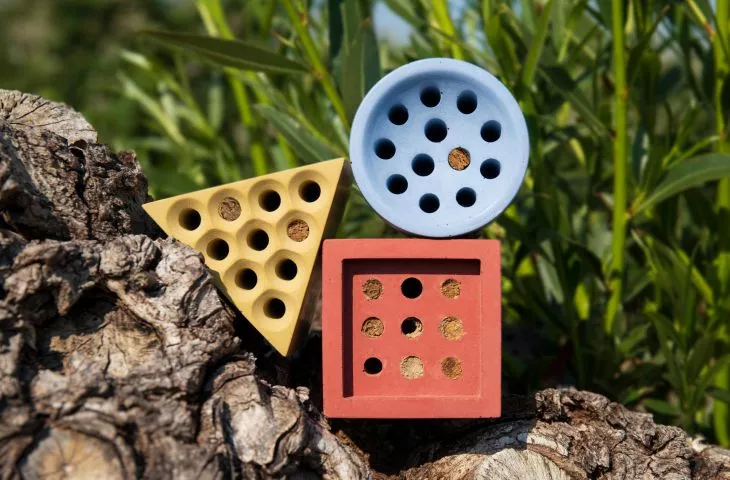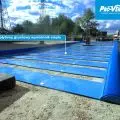Bee hotels don't have to be made only of natural components - the most common ones are those with pieces of bark, twigs, pinecones, moss and brick. Now a Bauhaus-inspired "Beehaus" concrete hotel has been created . Red square, blue circle and yellow triangle - wild bees like the red one best!
The nesting aids are made of self-compacting concrete with an edge length of about seven centimeters and come in the form of a red cube, a blue cylinder and a yellow pyramid. Weather-resistant inorganic pigments ensure long color fastness.
"Beehaus" nesting aids are available not only in red, blue and yellow, but also in the gray shade of light concrete. Yellow iron oxide pigment and black are also used to color concrete. Wild bees, however, are particularly fond of the red variant. These hotels are always occupied first!
© grellroth.beton
small works of art
Beehaus is made from fragments and leftovers from the production of larger components, which are mixed with high-quality white cement, easily dispersible pigments and concrete additives and poured into specially prepared molds to create durable bee houses - all done by hand.
Developing and manufacturing the polyurethane molds for this purpose was a challenge in itself, as the necessary working angles in the narrow conduits require a certain amount of expertise , one of the designers explains. - The concrete flows like honey and achieves an almost pore-free structure. This means that even complex geometric structures can be made without the need to shake the molds to vent.
Easily dispersible iron oxide pigments give the concrete a uniform and durable shade. These small works of art have not just been coated with pigment on the surface, but are resistant to light and weathering.
beehaus bee hotel
Holes of varying diameters attract different species of bees. The insects place nesting cells in the narrow and smooth tubes and supply the eggs with nectar and pollen. The bee then seals the tube with mud. In the spring, the larvae hatch and open the entrance to fly out. Bee hotels can then be easily cleaned with a fine brush.
© grellroth.beton
Insect hotels are usually made of wood or plant stems. However, bamboo tubes and other organic nesting boxes are often full of tiny splinters that can injure the bee and its delicate wings. The advantage of concrete as a material is smooth walls. In addition, concrete is extremely durable and requires no special treatment. Since it does not rot due to fungal attack - unlike some wooden nest boxes - hotels are very durable. Concrete "apartment buildings" require no maintenance and make their small contribution to the protection and reproduction of bees, which are extremely valuable pollinators for farmers and garden owners.
Insect hotels should be placed so that the entrance opening faces south and, if possible, hang them in a sunny spot that is protected from wind and rain. If there are plants liked by bees in the area, this will help provide food for them.














